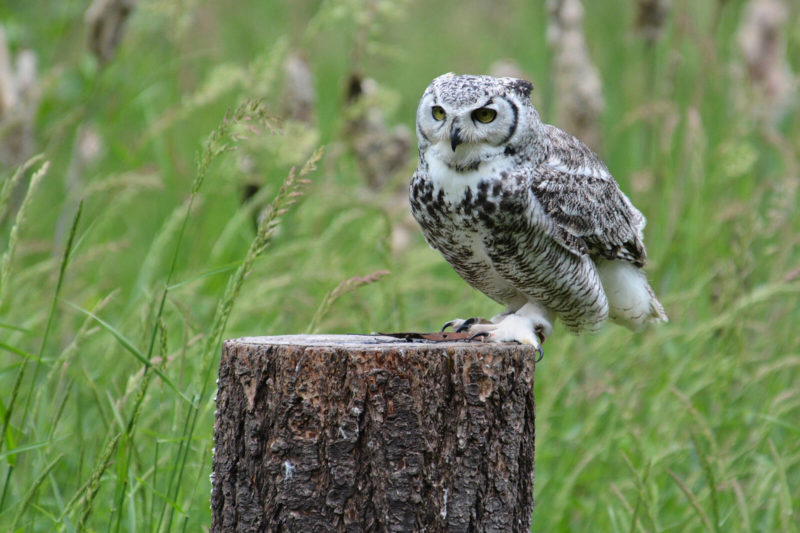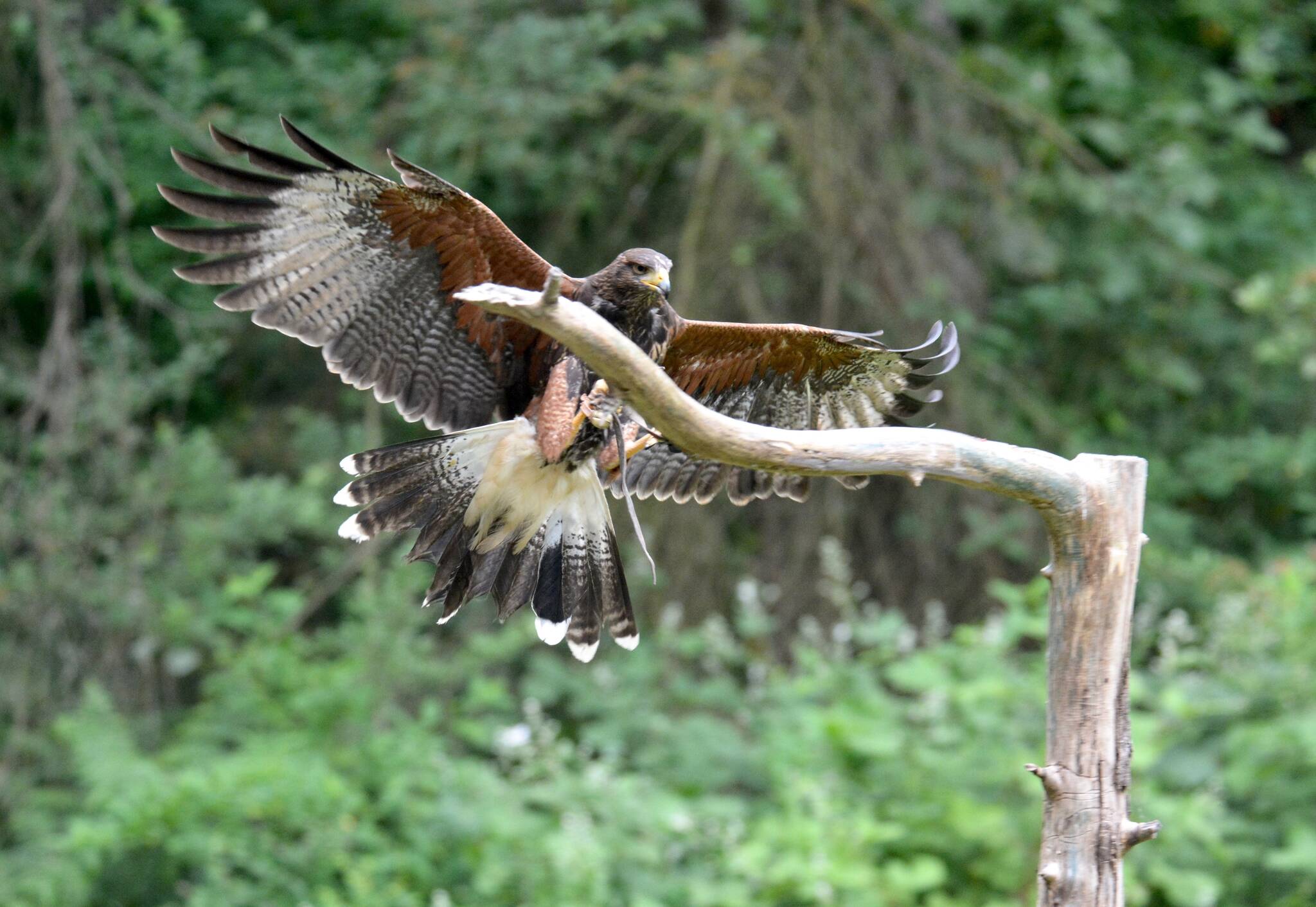Birds of prey have always inspired awe — they’re silent predators of the sky, swooping down with precision speed and deadly intent. Not only are raptors’ natural skills fascinating to see, but some can also play an important role in working to save human lives and millions of dollars.
The Raptors, a birds-of-prey wildlife organization based in the Cowichan Valley, on Vancouver Island, operates a visitor centre offering a variety of opportunities to learn about and connect with birds of prey.
Throughout the day, flying demonstrations highlight the birds’ unique flying skills. Visitors can also get closer to these remarkable birds by participating in hands-on learning encounters.
A hawk walk experience engages visitors by encouraging a hawk to fly directly onto their outstretched arm. A close encounter introduces visitors to several different raptor species on their gloved hand as well as participating in a hawk walk. Other opportunities offer more chances for in-depth learning.
READ MORE: Cowichan street sign project honours Indigenous history and culture
Rarely do people connect with nature and birds of prey in such an intimate way. The Raptors’ goal is to bring their amazing birds closer to people with the intent of inspiring visitors to want to make changes that will help protect natural spaces. The best way to understand nature and the importance of raptors is to see and engage with them up close.
In addition to engaging people about wildlife conservation and the immediate need to protect our planet, The Raptors also undertakes highly specific and unique work, using traditional falconry techniques to help control these species at a variety of industrial sites like airports, landfills and others areas.
Bird strike risk at airports is a very real threat to human safety. Many airports provide attractive habitats for bird species, and may be built on migratory flyways or estuaries. The presence of birds and the risk they pose can be mitigated by many wildlife management strategies, including trained raptors.
Raptors can be an effective solution for controlling a variety of species, including gulls, starlings, crows, robins, geese and other birds. As natural predators, the use of hawks, falcons and eagles at airports offers an alternative to shooting, poisoning or trapping.
The Raptors organization works at various sites across Canada, providing services that include falconry-based wildlife management, but also traditional techniques, including pyrotechnics, distress calls, chasing, habitat and management recommendations.
Working with trained birds of prey at airports and other industrial sites is effective, quiet and natural, and the birds love their jobs. It’s a win-win-win for wildlife management, animal welfare and environmental conservation.
Learn more about The Raptors in the Cowichan Valley and plan your visit at pnwraptors.com
– Reprinted from SOAR Magazine, the in-flight magazine for Pacific Coastal Airlines.
READ MORE: New Chemainus mural depicts a love story in the making
***
Plan your adventures throughout the West Coast at westcoasttraveller.com and follow us on Facebook and Instagram @thewestcoasttraveller. And for the top West Coast Travel stories of the week delivered right to your inbox, sign up for our weekly Armchair Traveller newsletter!












 Royal BC Museum extends orca exhibit through March
Royal BC Museum extends orca exhibit through March